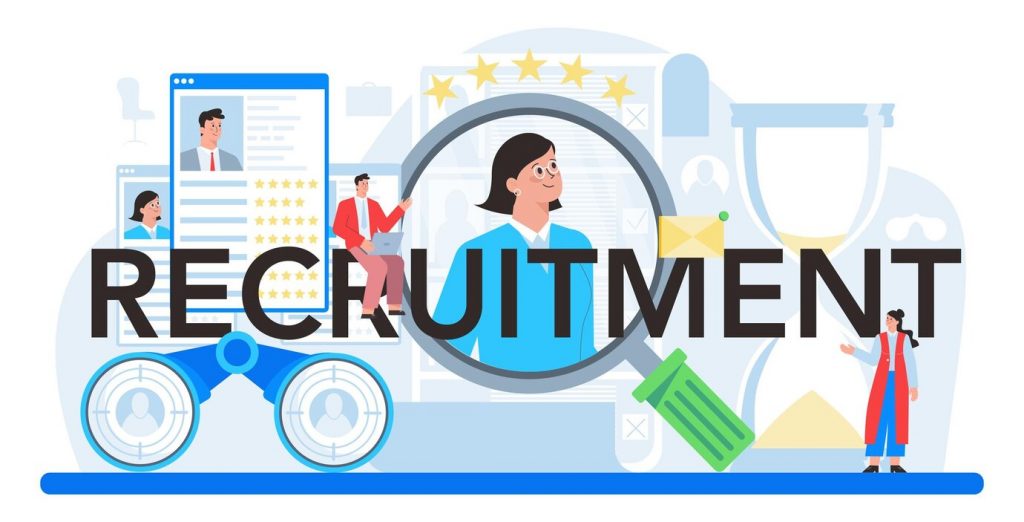LinkedIn Is No Longer Just a Network—It’s a Talent Goldmine
In 2025, LinkedIn has evolved from a professional networking site into a core engine of modern recruitment. With over 1 billion users globally (LinkedIn, 2025), including over 65 million decision-makers and 61 million senior-level influencers, LinkedIn remains the #1 platform for sourcing high-quality talent.
From high-growth startups to global enterprises, hiring teams are increasingly dependent on LinkedIn’s built-in search, AI-driven recommendations, and engagement analytics to find and attract top talent—both active and passive. This blog explores the most effective LinkedIn candidate sourcing strategies, explains what separates good recruiters from great ones, and highlights how platforms like JobTwine complement and supercharge LinkedIn recruiting efforts.
Why LinkedIn Is a Powerful Sourcing Platform
LinkedIn is used by 95% of recruiters for hiring, according to a 2024 report by Jobvite. It’s not just a professional directory—LinkedIn is a robust data engine. It blends candidate intent signals, behavioral data, and professional metadata to provide recruiters with a precise, contextual talent pool.
Here’s why LinkedIn dominates talent sourcing in 2025:
- Access to passive talent: Over 70% of the global workforce is considered passive talent (LinkedIn Talent Trends Report, 2024). LinkedIn enables direct engagement with this elusive pool.
- AI-powered features: LinkedIn Recruiter now includes smart filters, candidate matching algorithms, and InMail performance analytics.
- Industry-specific groups & thought leadership: Recruiters can tap into domain expertise by contributing to niche forums and showcasing organizational culture.
In short: LinkedIn is no longer optional—it’s foundational.
Also Read: JobTwine vs. BarRaiser: Which is the Best Interview Intelligence Platform?
Best LinkedIn Candidate Sourcing Strategies
1. Optimize Your LinkedIn Profile for Recruiting
Your company’s LinkedIn presence is your digital storefront for talent. Candidates evaluate you the same way you evaluate them.
Key tactics:
- Use SEO-friendly titles: Instead of “Talent Seeker,” go with “Hiring Full-Stack Engineers | AI Startups.”
- Write with relevance: The About section should focus on company mission, values, and open roles.
- Add keywords: Sprinkle in terms like “AI hiring,” “remote software roles,” or “series A startup” to improve visibility.
- Post consistently: Share hiring stories, employee testimonials, and company milestones. According to LinkedIn, company pages that post weekly see 2x more engagement than those that don’t.
Pro tip from JobTwine: Companies using JobTwine’s Interview Insights Toolkit embed role-specific language into their job descriptions, boosting discovery on LinkedIn and improving pipeline quality by up to 32%.
2. Use LinkedIn Boolean Search for Precision Hiring
Most recruiters use LinkedIn search. Few use it well. Boolean search is how you transform broad searches into laser-focused results.
Example Queries:
- (“machine learning” OR “deep learning”) AND “python” – Finds profiles with either ML or DL and Python.
- “product manager” AND (“B2B” OR “enterprise”) AND NOT “intern” – Avoids irrelevant junior profiles.
Best Practices:
- Use parentheses to control logic.
- Exclude keywords that dilute relevance (e.g., NOT “freelance”).
- Limit to recent experience (within 3 years) to assess current skill fit.
A LinkedIn report from 2023 showed that Boolean-savvy recruiters had 23% faster time-to-fill compared to traditional search users.
Also Read: Why JobTwine is the Best Alternative to BarRaiser for Smarter Hiring
3. Leverage LinkedIn AI & Automation Tools
AI has quietly become your new hiring assistant—and it’s already inside LinkedIn Recruiter. From smart filters to profile insights, LinkedIn is integrating generative AI to rank candidates not just by skills, but by likelihood to engage.
Top Tools to Use in 2025:
- LinkedIn Recruiter: Offers real-time candidate suggestions, diversity filters, and InMail tracking.
- LinkedIn Talent Insights: Delivers market intelligence and location-based salary benchmarks.
- Automated Outreach Platforms: While external tools like Expandi or PhantomBuster can speed up outreach, they must be used carefully to avoid violating LinkedIn’s terms.
Use Case: A fintech firm using JobTwine combined LinkedIn Recruiter and JobTwine’s sentiment analytics. Result: 42% higher InMail response rate and 18% increase in qualified interviews in just 3 weeks.
4. Craft Personalized Outreach Messages
Your message is your first impression—and in the era of AI, templated spam won’t cut it. A 2024 TalentBoard survey found that 86% of candidates ignore generic recruiter messages.
The 3-Step Outreach Formula:
- Personalized Hook: Mention their latest blog, GitHub project, or conference talk.
- Opportunity Fit: Align the role with their background and explain why now.
- Clear CTA: Suggest a short intro call or link to a scheduling tool.
Outreach Template for Passive Candidates:
Hi [Name], I recently saw your talk on scaling infrastructure at [Event]. We’re hiring a Senior DevOps Engineer at a remote-first AI company tackling similar scale problems. If you’re open to a quick, no-pressure chat, here’s a 15-min link. Hope to connect.
JobTwine customers report 35–50% higher candidate conversion when they combine data-driven personalization with structured interview follow-ups powered by JobTwine’s Interview Companion.
Also Read: Measuring ROI: The Business Impact of Interview Intelligence
5. Engage Through Content & LinkedIn Groups
Modern candidates don’t want to be sold to. They want to engage with companies that add value. Building trust requires visibility, consistency, and relevance.
Key Moves:
- Post value-driven content: Industry commentary, behind-the-scenes hiring videos, or founder Q&As.
- Participate in niche LinkedIn groups: Especially useful for hard-to-source roles like embedded systems engineers or behavioral scientists.
- Encourage employees to share job posts: Referred candidates are 4x more likely to be hired, according to Glassdoor.
Pro tip: The JobTwine platform enables companies to convert high-performing LinkedIn content into candidate entry points via smart links and call-to-action modules, improving engagement metrics across the funnel.
Common Mistakes to Avoid in LinkedIn Sourcing
- Even experienced recruiters fall into avoidable traps. Here’s what to look out for:
- Using one-size-fits-all messaging: This is the #1 cause of low response rates.
- Ignoring profile activity: If a candidate hasn’t posted or updated in 2 years, they’re likely disengaged.
- Neglecting analytics: LinkedIn’s post engagement and InMail response insights are crucial—but underused.
- Over-indexing on job titles: Focus instead on outcomes achieved, not just roles held.
Avoid these, and your sourcing efforts will become significantly more strategic.
The Future of LinkedIn Recruiting: AI, Automation & Skills-Based Hiring
The next phase of LinkedIn recruiting is deeply intertwined with AI, automation, and a shift away from traditional résumés.
What to Expect in 2025 and Beyond:
- AI-powered candidate matching: LinkedIn’s new generative AI is now surfacing “lookalike” candidates based on high performers in your company.
- Sponsored content for jobs: Companies using LinkedIn’s paid ads for job posts report 3.2x more qualified applicants.
- Rise of skills-based hiring: LinkedIn’s “Skills Match” feature is already live, highlighting functional ability over formal degrees—aligned perfectly with JobTwine’s role-based interview scoring methodology.
This shift represents an opportunity for platforms like JobTwine to bridge the gap between sourcing and structured evaluation—ensuring not just more candidates, but the right ones.
Also Read: The Role of Sentiment Analysis in Interview Intelligence
Conclusion:
LinkedIn is no longer just a place to find resumes—it’s where you assess engagement, showcase your employer brand, and start relationships. In a candidate-led market, how you source matters just as much as how you interview.
With intelligent messaging, AI-powered tools, and strategic engagement, companies can not only find great candidates—they can attract them. And when paired with platforms like JobTwine, hiring teams can finally build a full-stack recruitment funnel that aligns sourcing precision with interview excellence.
Frequently Asked Questions:
1. What is the most effective way to find passive candidates on LinkedIn?
Use Boolean search combined with activity filters, then craft personalized outreach that speaks to the candidate’s achievements.
2. How can I increase my InMail response rate?
Personalization is key. Reference their work, explain the opportunity, and provide a clear next step. A/B test your subject lines and monitor response analytics.
3. Is it okay to automate LinkedIn messages?
Only in moderation. Over-automation risks your account and degrades candidate trust. Personalized semi-automation (e.g., using JobTwine’s outreach insights) works better.
4. How does JobTwine integrate with LinkedIn?
JobTwine complements LinkedIn by enabling structured, role-specific interview workflows after sourcing, with real-time analytics on candidate performance.
5. What’s the best way to use LinkedIn groups for hiring?
Join groups relevant to your industry or role, contribute meaningfully, and share job posts with value-driven context. It’s a long-term branding and sourcing play.




